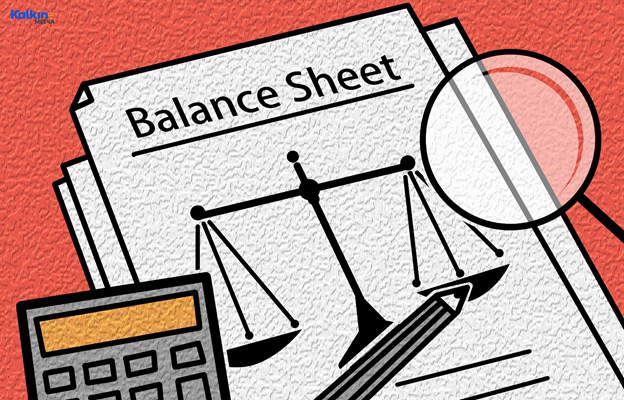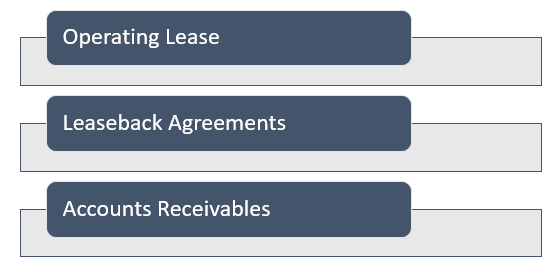What is Off-Balance Sheet (OBS)?
The term Off-Balance Sheet (OBS) are the hidden assets and liabilities that do not appear on the balance sheet of a company. Though these items are kept off the balance sheet, but they still showcase the company’s assets and liabilities. Generally, these assets and liabilities are not owned by, and do not have a direct claim by the company. The items of Off-Balance Sheet are commonly known as ‘incognito leverage' as these items is possessed by external sources.
Summary
- Off-Balance Sheet refers to the hidden assets and liabilities that do not appear on the balance sheet of a company.
- The items of Off-Balance Sheet are commonly known as incognito leverage as these items are possessed by external sources.
- Although the Off-Balance Sheet items do not appear on the balance sheet of a firm, but they are still considered as company’s assets and liabilities.
- The assets and liabilities of Off-Balance Sheet Off-Balance SheetOBS are hard to track in a company’s financial statement record in the accompanying notes of the financial statements of a company
Source: Copyright © 2021 Kalkine Media
Understanding Off-Balance Sheet (OBS)
The investors and traders often consider the items of Off-Balance Sheet as an important aspect while determining the financial health of a company. The assets and liabilities of Off-Balance Sheet (OBS) are track in a company’s financial statement. In fact, these items are only recorded in the accompanying notes of the financial statements and there are some items of Off-Balance Sheet that can be become company’s hidden liabilities. For instance, CDO stands for Collateralized Debt Obligations is considered as toxic assets; these assets can abruptly become illiquid completely, even before traders and investors are attentive of the financial exposure of a company.

Copyright © 2021 Kalkine Media
The items of Off-Balance Sheet (OBS) are not innately purposed to be deceive, but still sometimes the items can be used in a wrong way by agitators to deceive. There are certain companies that frequently keep substantial items of Off-Balance Sheet. Usually most of business, items of Off-Balance Sheet (OBS) present in association to financing, allows a company to keep compliance with current financial agreement or contracts. The items of Off-Balance Sheet are also used to allocate the risks and advantages of liabilities and assets with other businesses, just like joint venture projects. The companies must follow the requirements of SEC and GAAP by disclosing items on Off-Balance Sheet (OBS), the notes of financial statements of a company. Traders and investors can use these notes to understand financial health of a company.
Frequently Asked Questions (FAQs)
What are the types of Off-Balance Sheet items?
Some of the items of Off-Balance Sheet (OBS) are:

Source: Copyright © 2021 Kalkine Media
- Operating Lease
An Off-Balance Sheet operating lease refers where one who leases assets (lessor) continue to keep the possession on the leased asset on its balance sheet. The company who leased the asset is only entitled for getting monthly rental payments and associated fees instead of listing the asset and related liability on its own balance sheet. When the lease term ends, usually the one who holds the property (lessee) has an option to buy the assets at a minimum price.
- Leaseback Agreements
Leaseback Agreements refers to an agreement under which a company may sell an asset like a portion of asset or property, to another company. And then, they can lease the same property to a new owner. Just like operating lease, a company only can record the rent expenses or associated with rent on the balance sheet of the company, although the asset itself is recorded on the financial statement of the owning company.
- Accounts Receivables
Accounts receivable (AR) is an item of the Off-Balance Sheet that shows the balance of money due to a company for goods or services delivered. Many companies consider accounts receivable as a liability as it is the amount is yet to receive by customers, so the chance of default is very high. Usually, companies sell these assets to another company instead of recording this asset on its balance sheet.
What are the different advantages of Off-Balance Sheet?
There are various advantages of Off-Balance Sheet (OBS), like:

Source: Copyright © 2021 Kalkine Media
- Risk
A company generally doesn't have to list an item on its balance sheet as the item is neither a liability nor an asset. Companies usually sell the items which can become a liability to another company that directly reduces the risk of the company. A company can change an item into a non-liability with a renewable lease instead of taking a loan.
- Borrowing Capacity
When a company gets a new loan, the debt burden of the company would naturally increase. The company can avoid this burden of debt by using Off-Balance Sheet financing for obtaining the funds. Every company has a maximum limit for fund’s borrowing; with Off-Balance Sheet financing, a company can use its maximum capacity of borrowing.
- Reported Numbers
The Off-Balance Sheet (OBS) financing is not affected by the company’s reported ratios and numbers. The Off-Balance Sheet (OBS) financing is also helpful for a company who appear to be financially strong than compared to the situation if it was debt driven.
 UK
UK AU
AU CA
CA US
US NZ
NZ IND
IND Please wait processing your request...
Please wait processing your request...